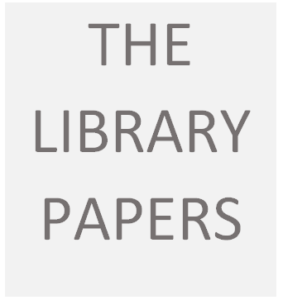Reflection
LIBE 477 Final Assignment Part 2
In my original proposal, I said I was interested in learning more about three possible topics: Learning Management Systems, blended learning models, and Personal Learning Networks; and of those three possibilities, my primary interest was LMSs. But in the course of researching these topics, I talked to four teachers, three of whom are already using some form of LMS, and the fourth who had some experience with Google Classroom, but who found that an LMS took more time than just using the features in MyEd. So researching LMSs didn’t seem like the best use of my time.
However, in the course of these conversations, it turned out that all four of them would be really interested in learning more about using QR codes for themselves and their students. In fact, their eyes lit up and they became genuinely enthusiastic when I asked them about it.
My original question about LMSs was to do with how teachers would accommodate diverse learning styles and support personalized instruction. I was already interested in learning about QR codes because I have noticed a growing number of teachers using them, but in the course of doing my research, I ran across references to using them for personalized instruction as well. I hadn’t thought of this previously, and I haven’t seen any actual applications of it yet, but it is something I will follow up on. For example, Kossey et al. (2015) had especially useful suggestions for specifically educational purposes.
QR codes are a form of augmented reality—I have seen a lot of different definitions of this term, but I understand it to mean it’s when physical artifacts have digital dimensions added to them via some piece of linking technology. I like this idea of blending technology and the ‘real’ world. It seems to me that even though we are living through a period of intense change, eventually things will slow down again, and while we won’t go back to whatever we previously thought of as ‘normal,’ some human patterns will assert themselves. Although I wasn’t there when it happened, I understand many people attribute to the printing press a similar social impact. Maybe people lamented back then that you couldn’t talk to anyone anymore because they always had their head in a book instead of knitting or wood-carving or whatever while listening to someone read to them.
Because QR codes are a relatively simple technology, and simple to use, there wasn’t much to learn about them. The articles I read discussed the same definitions, history and procedure for using them. What I did find challenging about this assignment was creating the how-to video and the demo project.
I wanted the how-to video to be interactive, and I have been wanting to explore the interactive feature of the H5P program, so I used this as an opportunity to do that. It took longer than I expected, partly because the program I used to create the animated slideshow (Camtasia) is more complicated than PowerPoint, but it’s also a more powerful program and you can do more with it. But still, it takes more time. I love using it; I love the slideshow I made, and I believe the end product is more polished than what you could achieve using PowerPoint (which you can see here: scroll down the page til you get to the video players to view two examples), and definitely more engaging than just plain text; but I wonder about the feasibility of making instructional videos like this—students have time to learn new techniques and create entertaining artifacts. I’m not sure librarians do.
On the other hand, once I had finished doing that, it didn’t take so much time to upload it to YouTube, embed it in H5P, and add the interactive elements. In fact, that was easy and a lot of fun. But I couldn’t have done it without the slideshow. Not sure where that leaves me. The demo project was also easy to make, but for that one, I only used a map as a background image, and then added hotspots to it. The most time-consuming part of that was describing the fake student projects.
My final thought is that I really enjoyed creating both of these artifacts; it would be easy to teach others, both teachers and students, how to use QR codes and H5P in their own work. And useful as well.




QR codes are an interesting ICT tool. Your final vision is a great resource to help demystify their use, especially as related to the library learning commons. I wonder about your reflections on the course as a whole?